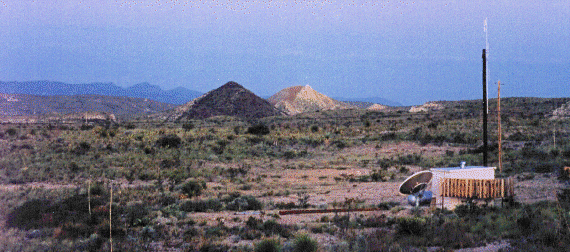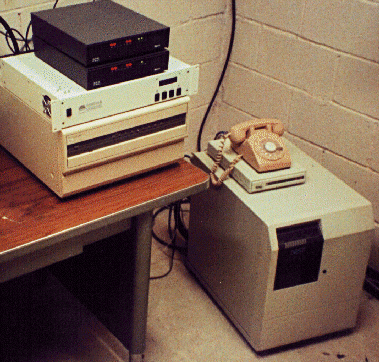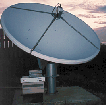


A single four-element omni-directional antenna at the hub receives data from
all array elements, and transmits commands to each elements. At Lajitas,
only three VHF frequencies are used for the 9 existing RF linked elements.


The antenna feeds two VHF radio modems connected to an array
controller and data concentrator. The output of the concentrator
feeds a single satellite circuit going back to Dallas.

The communications controller polls each element on a command
frequency and receives the data back on one of the two data frequencies.
Messages are error corrected if needed such that no data is lost
due to short transmission errors. The data is then compressed,
blocked if needed, and transmitted by satellite modem to the Dallas
data center where it is forwarded to other clients.

The high capacity UPS provides up to 4 hours of standby power from a small battery bank. A telephone connection directly to the UPS allows the monitoring state-of-health for the power supply, power cycling the equipment in emergencies, and warning of battery failure.
Since commercial power at Lajitas may frequently be out longer
than a few hours, alternative means of powering the satellite
transmitter must be available. The radios and communications
controller are low enough power to be supplied from batteries
if desired.

For over a year, the hub was totally powered
from a thermoelectric generator. A large gas tank had to
be refilled about every two months, but the system was highly
reliable and completely independent of commercial power.
Later, during installation of the full array, the system
was switched to a more economical UPS operation.

The UPS battery plant motor-generator back up is
capable of handling extended power outages. It also supplies
sufficient power (3Kw) to run one or more on-site workstations
used during experiments. Like the UPS the generator also has
the capability for remote state-of-health monitoring.